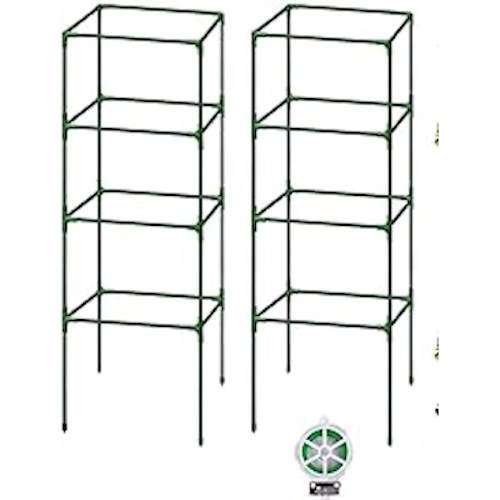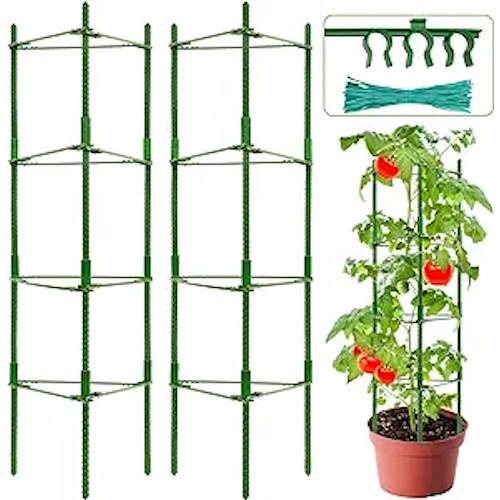How to grow zucchini vertically – expert tips for big harvests in small spaces
Short of space for sprawling zucchini plants? Why not train the crop to grow vertically?
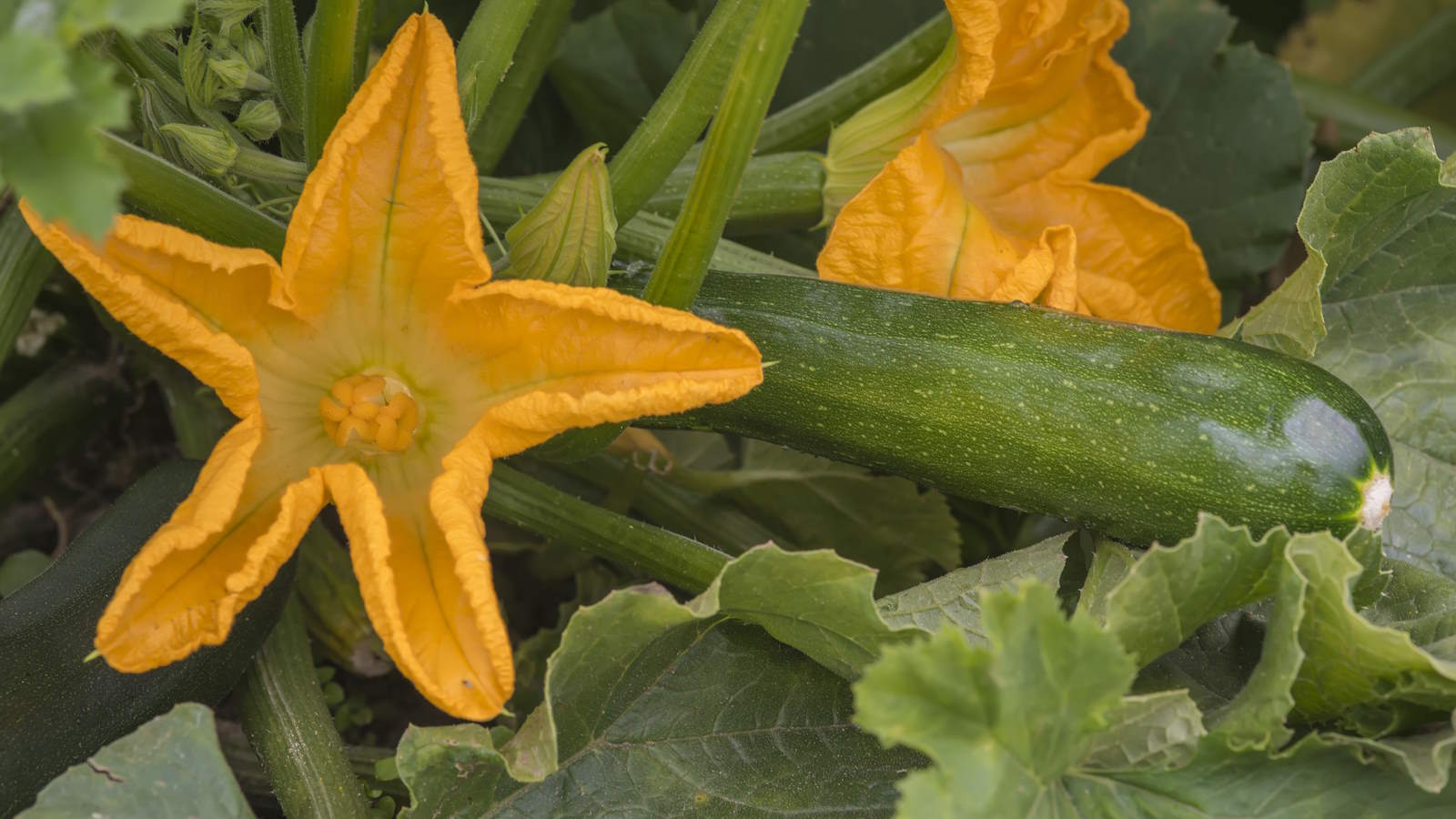

Zucchini are reliable, fast-growing, and prolific crops to grow in a backyard vegetable garden. However, did you know zucchini can be trained to grow vertically in a novel space-saving way to cultivate the plants in smaller spaces?
Part of the summer squash family, zucchini - or courgettes as they are also known - can usually take up a lot of room as they grow, due to large foliage and sprawling stems. This can create issues for anyone with restricted space - so growing zucchini vertically can be an ideal solution.
If you want to learn how to grow zucchini in this beneficial way, two growers who have cultivated the crop vertically reveal some tips to get it right. I have grown zucchini for years in vegetable gardens, but always the same way - so this is a method I am interested in trying for myself.
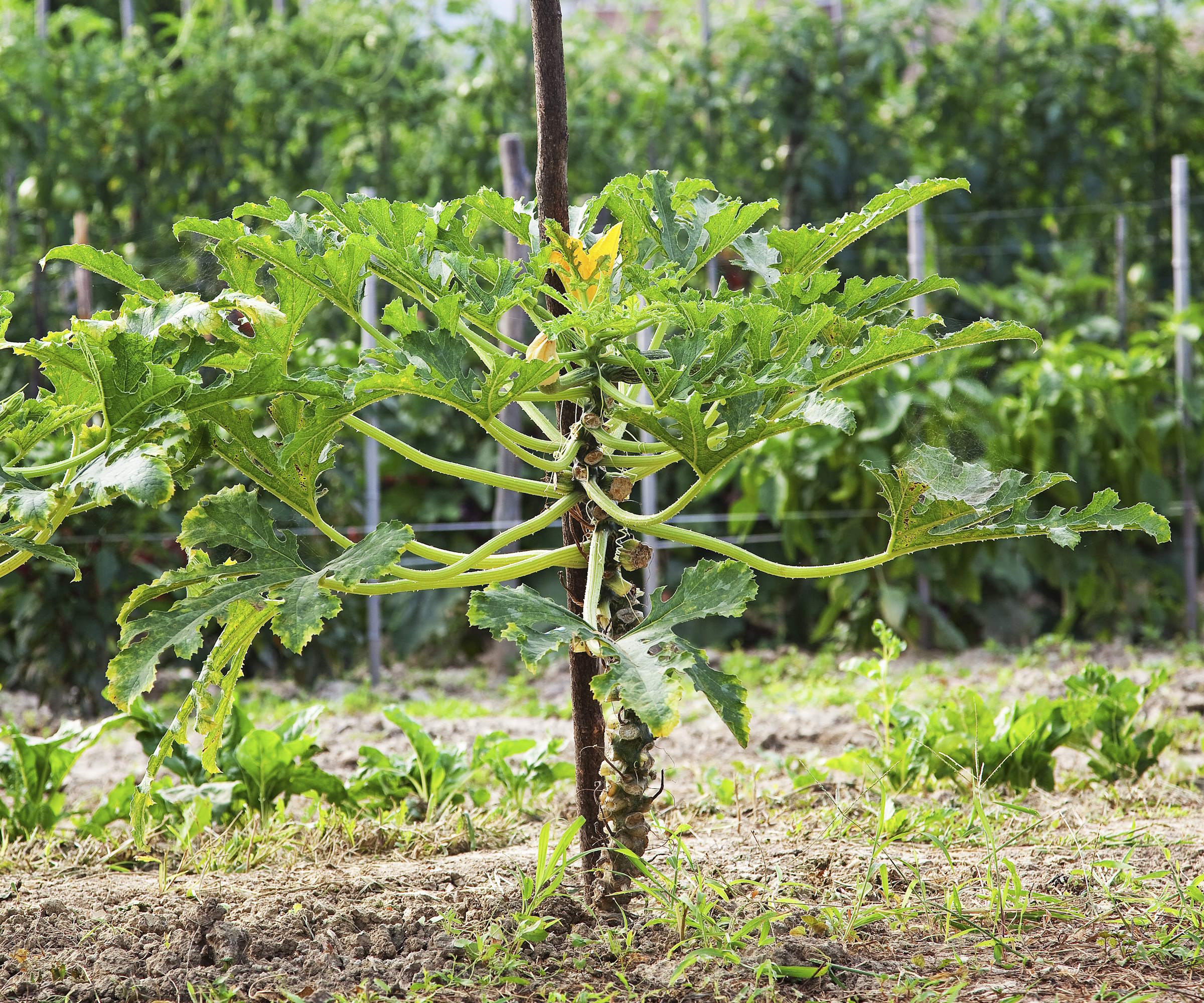
Growing zucchini vertically makes the crop look statuesque
How do you grow zucchini vertically?
Getting these usually bushy plants to grow vertically rather than horizontally may sound tricky, however, it can be done simply with care and attention. It requires a good support structure, regular training and tying, and a bit of pruning to be done successfully - all alongside the usual watering, feeding, and harvesting. If growing crops vertically is all new to you, let's look at the benefits it offers and some key areas to get right.
Benefits of growing zucchini squash vertically
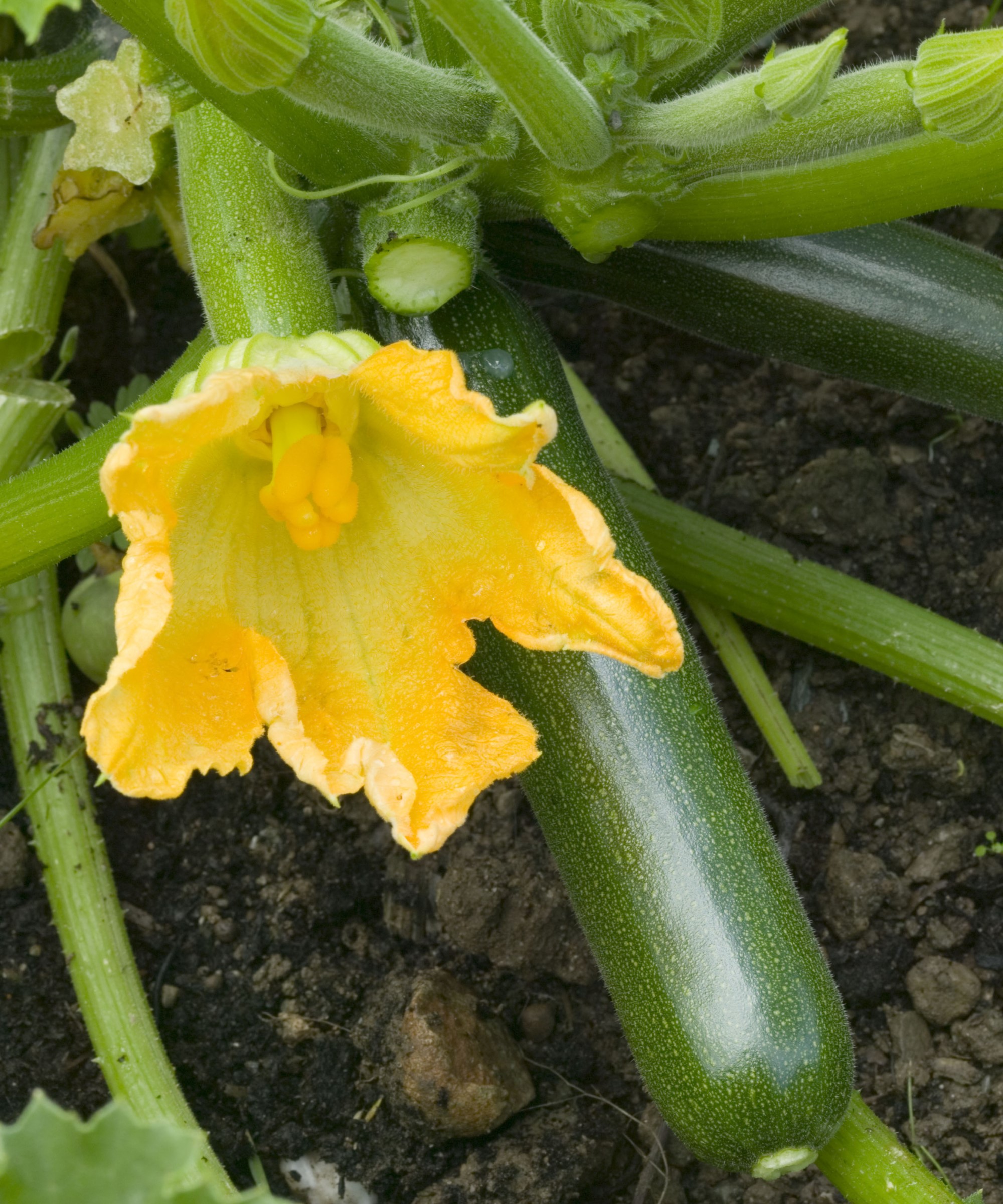
Zucchini are prolific plants that provide large harvests each summer
Zucchini plants can take up lots of space in a vegetable garden, with one individual specimen potentially growing five feet wide - depending on the particular variety. This large footprint can be a barrier to growing zucchini for people with small vegetable gardens and restricted outside spaces.
That is where growing zucchini vertically comes with distinct advantages. Growing the plant as part of vertical garden ideas means the plants take up much less space. It allows more zucchini to potentially grow in a space and also frees up the soil space around the base of the plant, where you can grow fast-growing vegetables to get abundant harvests from the space.
As well as being a space-saving way to grow, Rachel Quenzer from Sugar Maple Farmhouse hails the fact that growing the crop vertically can help combat zucchini diseases and pests.
‘Growing vertically helps to prevent mildews by allowing air to circulate better through the leaves. I usually remove all the leaves growing lower than the fruit to help provide even better airflow,’ says Rachel.
‘It also allows you to see any bug issues early. Generally, squash bugs like to lay their eggs under a leaf so you will be able to better identify those leaves and either remove the whole leaf or remove the eggs.’
Lifting the fruits off the soil also helps to prevent pests from nibbling on the zucchini and can promote a more uniform development of the growing fruits.

Rachel is wife, mother and home and garden expert. She has almost a decade of organic gardening experience and a farmhouse recipe book coming out in fall 2024 where she showcases her rustic, fresh cooking style most commonly featured on her website Sugar Maple Farmhouse. Rachel grew her farmhouse garden from nothing to a 1/4 acre food forest with raised beds, a cut flower space and a field dedicated to wildflowers and pollinators.
Tips to grow zucchini vertically successfully
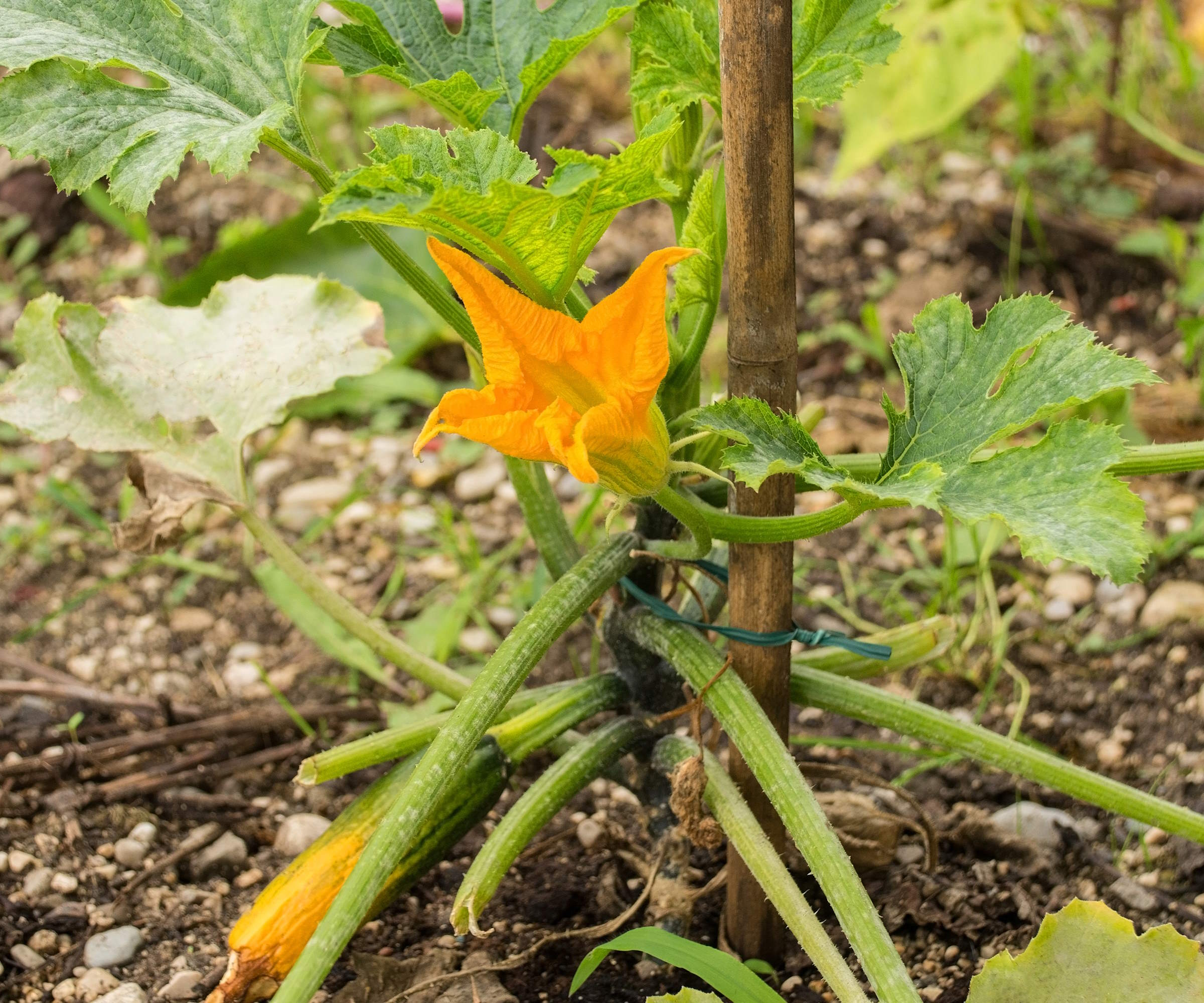
Zucchini plants are tied and trained to grow vertically
You can buy zucchini plants from garden centers or nurseries to plant the vegetable in the garden or you can grow your zucchini plants from seed, either planting them indoors in April or sowing seeds outdoors in May.
Planting
Whether you are planting young plants out into the kitchen garden once the risk of frost has passed, or sowing seeds directly, it is recommended to put the trellis or support structure in place at the time of planting.
Plant zucchini at least two feet apart when growing them vertically, ideally giving them closer to 4 square feet per plant. The plants want to grow in fertile and well-draining soil types and to be in a sunny spot in the garden. As well as watering plants and feeding the crops as they grow, training and pruning the plants are key to success.
Training
Zucchini plants can be trained to grow vertically up a range of vegetable garden trellis ideas, including solid stakes, a rustic homemade trellis, a pergola or arch, or a tomato cage.
Having the support in place at the time of planting the zucchini is beneficial. It is easier to install around a young plant and eliminates the risk of damaging the plant as it grows when attempting to put it in place down the line.
‘A key tip for successful vertical zucchini growing is choosing the right support. In my practice, a 6-foot wooden stake, positioned at planting time, serves as an effective support for the plant,’ says Tim Leveille, an expert grower from Organic Backyard Gardening.
‘Sowing seeds or transplanting seedlings about 3 inches from the stake on its south side ensures optimal sun exposure. As the plant grows, tying it to the stake at regular intervals (every six inches or so) with simple garden jute keeps it ascending and supports the weight of the fruit.’
It is advisable to remember to tie the plants to the support often - with natural jute, available at Amazon, or any other soft ties - as the zucchini plants quickly grow and the stems can start to droop away from the support. Leave it too long and you risk snapping the stem trying to encourage it back to the trellis.

Tim, an expert grower from New Hampshire, leads PlanMyGarden, a service that has helped thousands of gardeners simplify their garden planning by delivering custom plans in just 24 hours. His extensive website and the well-followed Organic Backyard Gardening YouTube channel offer a wealth of information on effective gardening strategies.
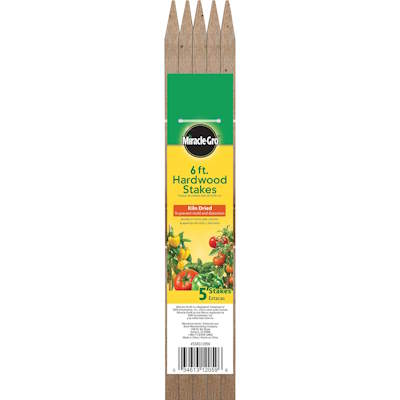
A pack of five 6-foot sturdy kiln-dried stakes with sharpened points easily penetrate into the ground.
Pruning
As the plant grows quickly, keeping on top of pruning is also a critical task. It will help to ensure continual air circulation through the plants - which helps against fungal diseases such as powdery mildew that can cause zucchini leaves to turn white - and focus the plant’s energy on producing fruits to harvest.
The plant does not need all the foliage as it grows, so you should start removing the lower leaves below the fruits as they develop. Snipping off the excess foliage with a pair of clean and sharp pruning shears will divert the energy into fruiting.
Harvesting
As the plant develops, regular harvesting of zucchini will also lead to continuous production of fruits. Snipping off the fruits as they grow to a usable size will also reduce the weight load on the climbing plant and you can easily get a steady supply of zucchini. You can also harvest zucchini flowers from the plant to eat raw or cooked.
Growing zucchini vertically in a tomato cage
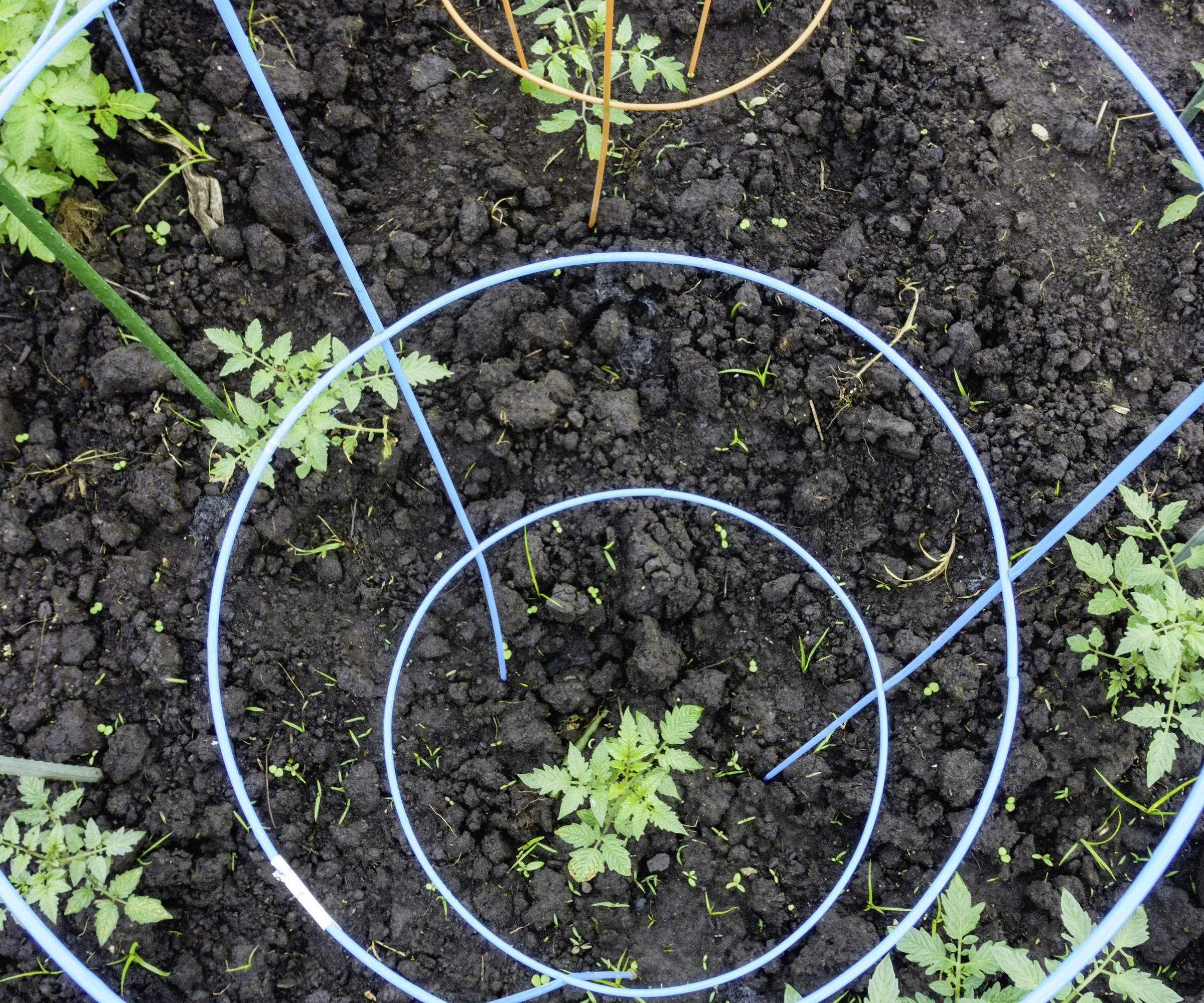
Tomato cages can support many vertically-grown plants, including zucchini
A tomato cage is one of the best ways to grow zucchini vertically. A vertical zucchini cage will surround the plant as it grows and provide solid support to train the plants.
Rachel Quenzer uses them as a vertical zucchini cage to grow her plants and adds the cages when the plants are seedlings. She recommends: ‘When using the tomato cage, I prefer the square cages and will place the seeding right in the center of the cage and then push it into the ground to the first crossbar.’
As the plant grows, she advises to ‘weave the upper leaves through the levels of the cage as it grows’. Rachel adds: ‘Make sure to keep up with the plant as it grows. If you don’t, you might have some issues moving the leaves through the levels of the tomato cages.’
Shop Tomato Cages
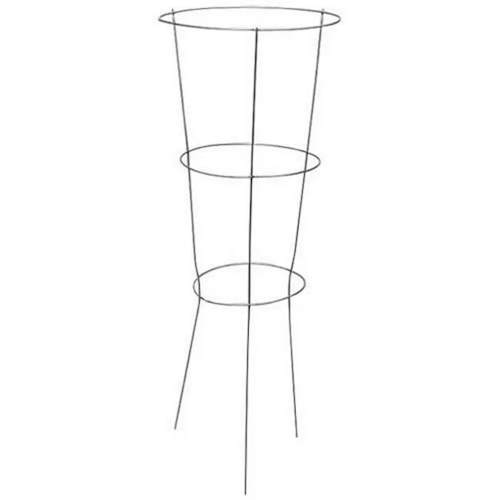
A 42" wire tomato cage made of heavy-duty galvanized steel to support top-heavy plants.
FAQs
How tall do zucchini plants grow vertically?
Zucchini plants will not grow excessively tall when being grown vertically. It is likely the plant will reach up to around 3-4 feet in height, depending on the variety. Tim from Organic Backyard Gardening recommends using a 6-foot wooden stake as a support, which would be knocked 2 feet into the ground and leaves 4 feet of stake to train the plant to.
Can you grow zucchini in containers vertically?
Zucchini are suitable to grow in pots as part of a vegetable container garden. The crop does need a large container to house its extensive root system, ideally at least 18 inches deep and 16 inches wide. Zucchini growing in pots can be trained to grow vertically - you can either use a wooden stake or tomato cage in the container and follow the guidelines outlined above. Crops growing in containers will require more watering and feeding than when growing plants in the ground.
As well as zucchini, many varieties of both summer and winter squashes can be trained to grow vertically, rather than sprawling horizontally over the soil and taking up lots of space. If you plan to grow squash vertically, more compact types of summer squash are ideal along with smaller-fruiting winter squash varieties.
Sign up to the Homes & Gardens newsletter
Design expertise in your inbox – from inspiring decorating ideas and beautiful celebrity homes to practical gardening advice and shopping round-ups.

Drew’s passion for gardening started with growing vegetables and salad in raised beds in a small urban terrace garden. He has worked as a professional gardener in historic gardens and specialises in growing vegetables, fruit, herbs, and cut flowers as a kitchen gardener. That passion for growing extends to being an allotmenteer, garden blogger, and producing how-to gardening guides for websites. Drew was shortlisted for the New Talent of the Year award at the 2023 Garden Media Guild Awards.
-
 Ina Garten's storage pantry is an insightful window into all of the best cookware used by the chef – and it's easy to recreate on your kitchen shelves from $48
Ina Garten's storage pantry is an insightful window into all of the best cookware used by the chef – and it's easy to recreate on your kitchen shelves from $48The beautiful dishware in The Barefoot Contessa's Hamptons pantry showcases the tools she uses most often to cook – this is exactly how you replicate it
By Sophie Edwards Published
-
 Extend the lifespan of your appliance with 5 simple but crucial washing machine maintenance tips
Extend the lifespan of your appliance with 5 simple but crucial washing machine maintenance tipsFrom cleaning the filters to keeping the door open, experts reveal the washer tips they swear by
By Andy van Terheyden Published
